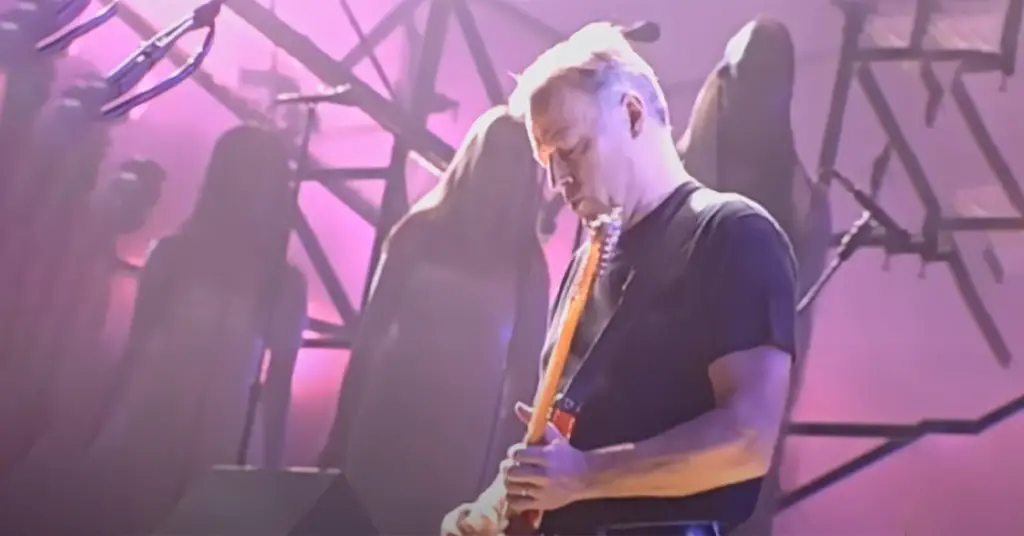Pink Floyd – “Another Brick in the Wall (Part II):” The Anthem That Tore Down More Than Just Walls
When Pink Floyd released The Wall in 1979, they weren’t just building a concept album—they were constructing an epic psychological fortress, one brick at a time. At its center stood a rebellious, haunting cry that would become one of the most iconic songs of its era—and one of the most unlikely protest anthems in rock history:
“We don’t need no education…”
“Another Brick in the Wall (Part II)” isn’t just a song. It’s a full-scale rebellion wrapped in disco grooves and chanted by a children’s choir. It’s ironic, infectious, and unforgettable. And in true Pink Floyd fashion, it’s also layered, dark, and deeply personal.
The Concept: Education as Oppression
The Wall tells the story of “Pink,” a rock star spiraling into isolation. Each painful experience he endures becomes a metaphorical “brick in the wall” that cuts him off from the world. Part II focuses on one of the earliest bricks—his traumatic experience with authoritarian schooling.
Written by bassist Roger Waters, the song is a direct indictment of the rigid British educational system, which Waters experienced firsthand. Teachers were often cold, punitive, and dismissive of creativity. The line:
“Hey, teacher! Leave them kids alone!”
isn’t just a schoolyard chant—it’s a cry for liberation from a system that crushed individuality.
The Sound: Rebellion with a Beat
What makes “Another Brick in the Wall (Part II)” so surprising is how catchy it is. For a band known for sprawling, atmospheric compositions, this song is tight, danceable, and almost pop-friendly.
The funk-influenced rhythm guitar and disco-style beat (courtesy of producer Bob Ezrin) give it a pulse that made it radio gold—without sacrificing any of its edge. David Gilmour’s guitar solo is both slick and seething, slicing through the beat with restrained fury.
But the moment that defines the song is the London children’s choir, chanting:
“We don’t need no thought control…”
Their voices add both innocence and eeriness, making the song both playful and chilling—as if the children are singing a lullaby while tearing down a regime.
Cultural Shockwaves: A Protest Heard ‘Round the World
“Another Brick in the Wall (Part II)” became an instant hit, reaching #1 in more than 10 countries, including the U.S., U.K., and Germany. It remains Pink Floyd’s only #1 single in the U.S.
Its message, while rooted in Waters’ personal experience, quickly took on universal meaning. In apartheid-era South Africa, it was adopted by students protesting educational injustice and was banned by the government. Around the world, it became an anthem for youth pushing back against oppressive systems.
Ironically, some listeners missed the nuance of the lyrics and saw it as simply anti-education. Waters later clarified: he wasn’t against learning, but against indoctrination. The song is a critique of schools that demand obedience over imagination.
Legacy: Still a Rallying Cry
More than four decades after its release, “Another Brick in the Wall (Part II)” remains one of the most recognizable protest songs in rock history. Its line “We don’t need no education” has been quoted, parodied, and spray-painted across classroom walls worldwide.
Live, it has taken on monumental proportions—especially during Roger Waters’ solo tours, where giant puppets, fascist imagery, and crumbling wall sets turn the performance into a full-blown spectacle of resistance.
It’s not just a song—it’s a ritual of rebellion.
Final Thoughts
“Another Brick in the Wall (Part II)” is a rare thing: a song that sells millions and shakes institutions. It’s both a deeply personal trauma and a global anthem. A song where children sing out against control, and rock guitars rage against conformity.
The wall might be metaphorical—but the impact was real.
And even today, when the chorus hits, it still feels like a revolution.
Want to continue deeper into The Wall with songs like “Comfortably Numb” or “Mother”? Or explore the evolution of Pink Floyd’s themes in Animals or Wish You Were Here? Let me know!


Facebook Comments